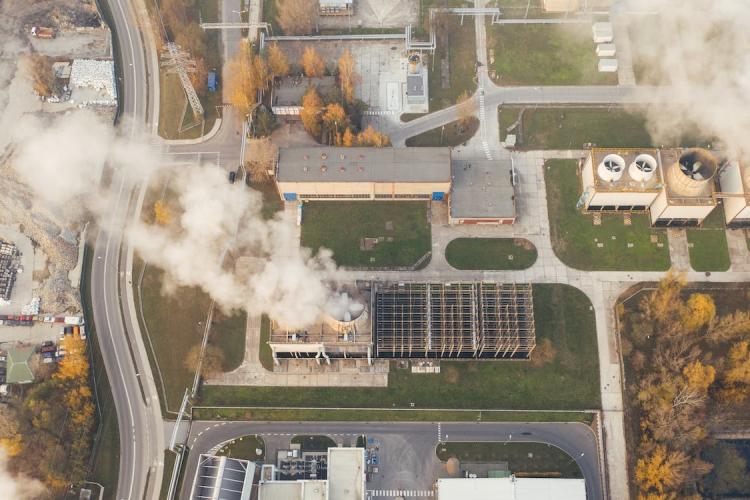
On January 27, 2021, President Biden signed Executive Order 14008 “Tackling the Climate Crisis at Home and Abroad” with the intent to address climate change and its adverse effects, both domestically and internationally. This is a historic measure that places the climate crisis at the forefront of foreign policy and national security. Under section 223 of this Executive Order, The White House established the Justice40 initiative which aims to give impacted communities at least 40% of the overall benefits of Federal climate and clean infrastructure investments. Identifying impacted communities as those that have been historically underserved and overburdened by extraction, hazardous waste, pollution and other harms, Justice40 seeks to prioritize environmental justice by addressing the historic lack of funding and resources given to these communities. These environmental justice communities, often communities of color and low-income, bear the brunt of the climate crisis. Directing 40% of funding and efforts their way is a step towards climate justice. Funds will be allocated from agency programs that focus on one or more of the following seven categories:
- Climate change
- Clean energy and energy efficiency
- Clean transit
- Affordable and sustainable housing
- Training and workforce development
- Remediation and reduction of legacy pollution
- Development of critical clean water and wastewater infrastructure
To identify the communities that will be covered under Justice40, the White House Council on Environmental Quality developed the Climate and Economic Justice Screening Tool (CEJST) which can identify communities down to the census tract level. CEJST, which is still being finalized, ranks communities based on the seven categories listed above and added health burden as the eighth category. Communities are identified as impacted if they are above a threshold for one or more of these eight categories. Within the categories, CEJST utilizes several environmental and climate indicators combined with socioeconomic indicators to determine whether a census tract meets the criteria to be classified as an EJ community. For example, in the clean energy and energy efficiency category, communities are identified as overburdened if they meet the following criteria:
- If they are at or above the 90th percentile for energy burden or PM2.5 in the air
AND
- If they are at or above the 65th percentile for low income and 80% or more of individuals 15 or older are not enrolled in higher education
Identifying communities is only the first and arguably the easiest step. Making sure that communities identified by the CEJST tool are part of the program design and implementation is where the real challenge lies, as those most affected by the climate crisis are seldom the ones who have the agency and power to make decisions of this nature. In addition to this gap, federal programs and funds are notoriously difficult to navigate. To ensure that those most affected by the climate crisis are being heard and included, the Justice40 Initiative requires covered programs to create stakeholder engagement plans to intentionally include community members in stakeholder consultations and when determining and reporting program benefits.
To provide direction for the participating federal agencies, the White House also issued M-21-28 Interim Implementation Guidance. Justice40 was rolled out in an initial set of 21 existing programs that served as pilots. The goal was to accelerate the impacts and provide lessons and best practices for future programs. To date, more than $29 billion in federal investments and funding have gone towards achieving the Justice40 Initiative through the 21 pilots, including over $3 billion for the Weatherization Assistance Program (WAP) and $100 million to support the Low Income Home Energy Assistance Program (LIHEAP). In another effort to address climate change by the White House, the recently rolled out Inflation Reduction Act will allocate more than $60 billion to Justice40.
Participating agencies include the Department of Agriculture, Department of Energy, Department of Transportation, Environmental Protection Agency and more. The Department of Energy currently has over 140 Justice40 covered programs and has identified the following 8 policy priorities to guide their Justice40 work:
- Decrease energy burden in disadvantaged communities (DACs)
- Decrease environmental exposure and burdens for DACs
- Increase parity in clean energy technology (e.g., solar, storage) access and adoption in DACs
- Increase access to low-cost capital in DACs
- Increase clean energy enterprise creation and contracting (MBE/DBE) in DACs
- Increase clean energy jobs, job pipeline, and job training for individuals from DACs
- Increase energy resiliency in DACs
- Increase energy democracy in DACs
DOE’s Office of Economic Impact and Diversity will lead the implementation of Justice40 within the department. While the Climate and Economic Justice Screening Tool (CEJST) is still being finalized, DOE has been using the Disadvantaged Communities Reporter, a mapping tool created by the department to identify DACs. Using 36 burden indicators grouped across the following four categories: Fossil Dependence, Energy Burden, Environmental and Climate Hazards and Socio-economic vulnerabilities, the tool categorizes census tracts across the country. The tool uses blue to identify DACs and green to identify federally recognized tribal lands and U.S. territories.
The Justice40 initiative is a historic step to address systemic disinvestment and reshape how climate investments are distributed. As the initiative continues to roll out, MEEA will be tracking its progress. To learn more about DOE’s involvement with Justice40 including their roadmap to funding and engagement, please visit here. To learn more about Justice40 in general, please visit here.